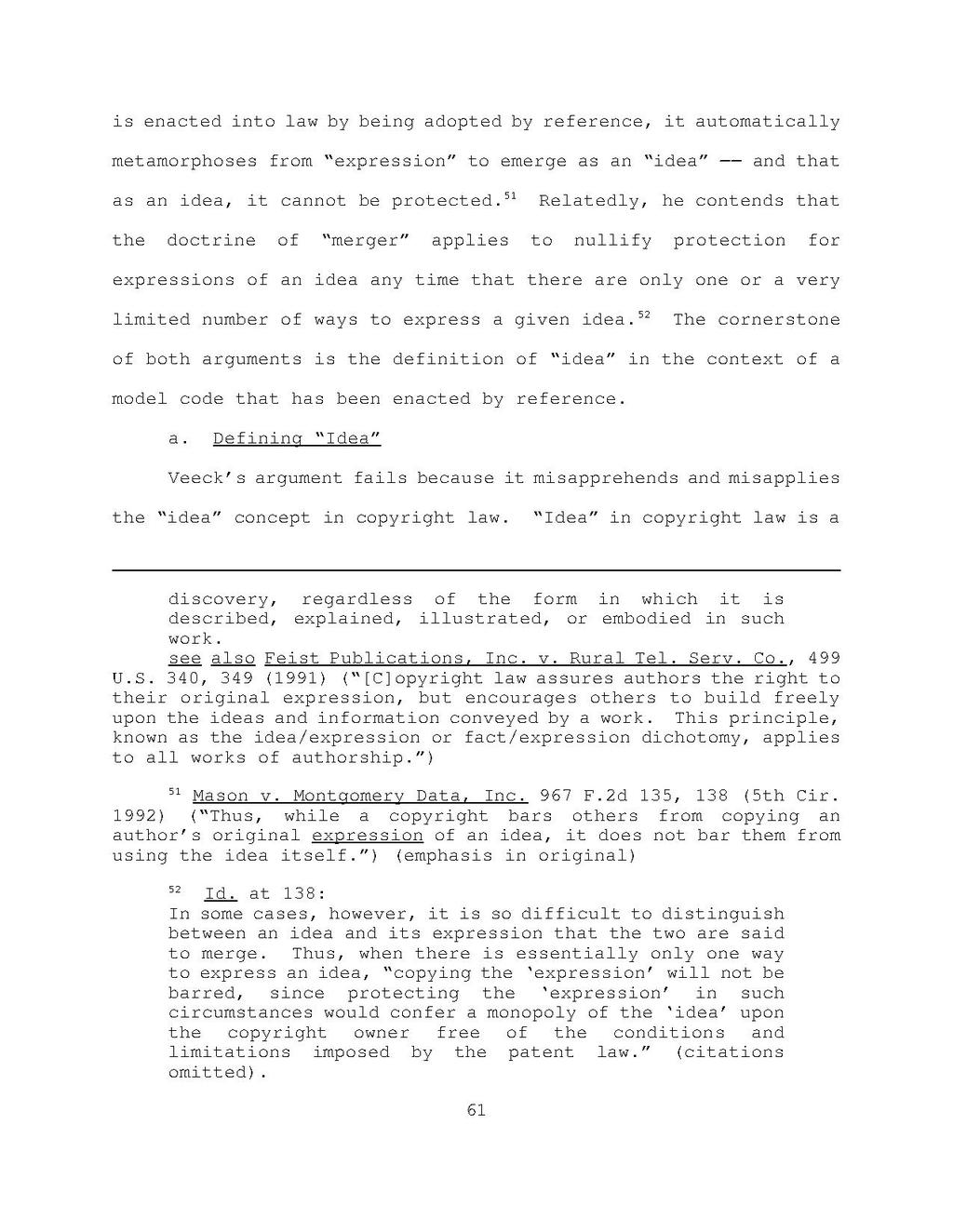is enacted into law by being adopted by reference, it automatically metamorphoses from "expression" to emerge as an "idea"—and that as an idea, it cannot be protected.[1] the doctrine of "merger" applies Relatedly, he contends that to nullify protection for expressions of an idea any time that there are only one or a very limited number of ways to express a given idea.</ref>[2] The cornerstone of both arguments is the definition of "idea" in the context of a model code that has been enacted by reference.
a. Defining "Idea"
Veeck's argument fails because it misapprehends and misapplies the "idea" concept in copyright law. "Idea" in copyright law is a
- ↑ Mason v. Montgomery Data, Inc. 967 F.2d 135, 138 (5th Cir. 1992) ("Thus, while a copyright bars others from copying an author's original expression of an idea, it does not bar them from using the idea itself.") (emphasis in original)
- ↑ Id. at 138:
In some cases, however, it is so difficult to distinguish between an idea and its expression that the two are said to merge. Thus, when there is essentially only one way to express an idea, "copying the 'expression' will not be barred, since protecting the 'expression' in such circumstances would confer a monopoly of the 'idea' upon the copyright owner free of the conditions and limitations imposed by the patent law." (citations omitted).
discovery, regardless of the form in which it is described, explained, illustrated, or embodied in such work. see also Feist Publications, Inc. v. Rural Tel. Serv. Co., 499 U.S. 340, 349 (1991) ("[C]opyright law assures authors the right to their original expression, but encourages others to build freely upon the ideas and information conveyed by a work. This principle, known as the idea/expression or fact/expression dichotomy, applies to all works of authorship.")
61
